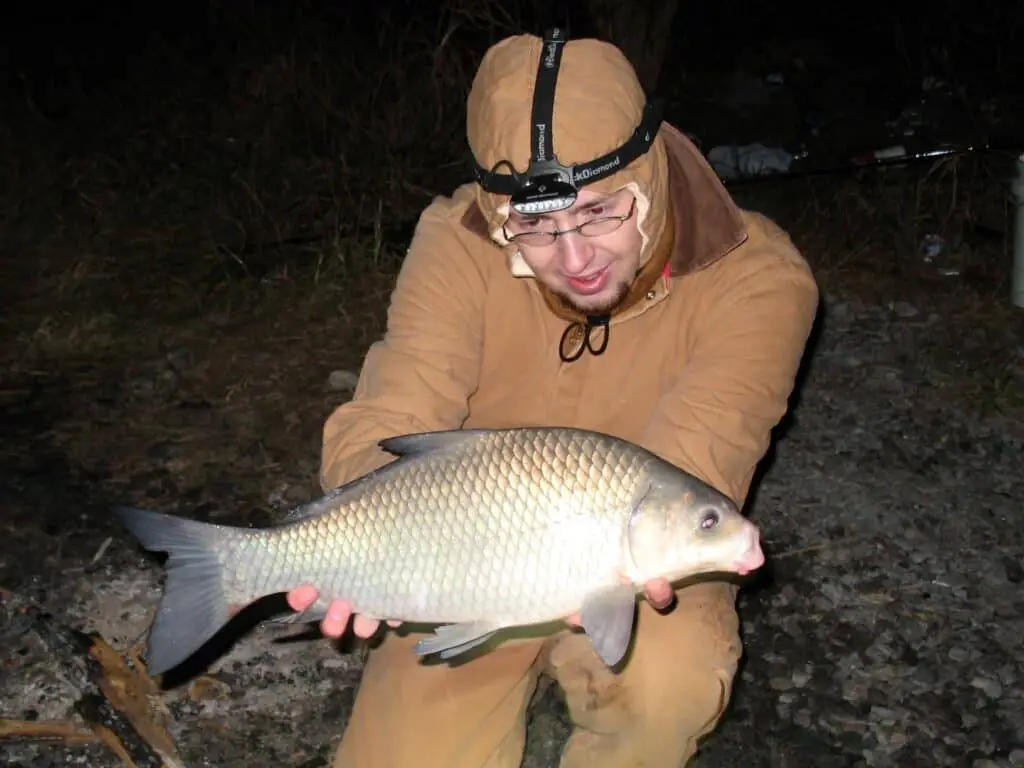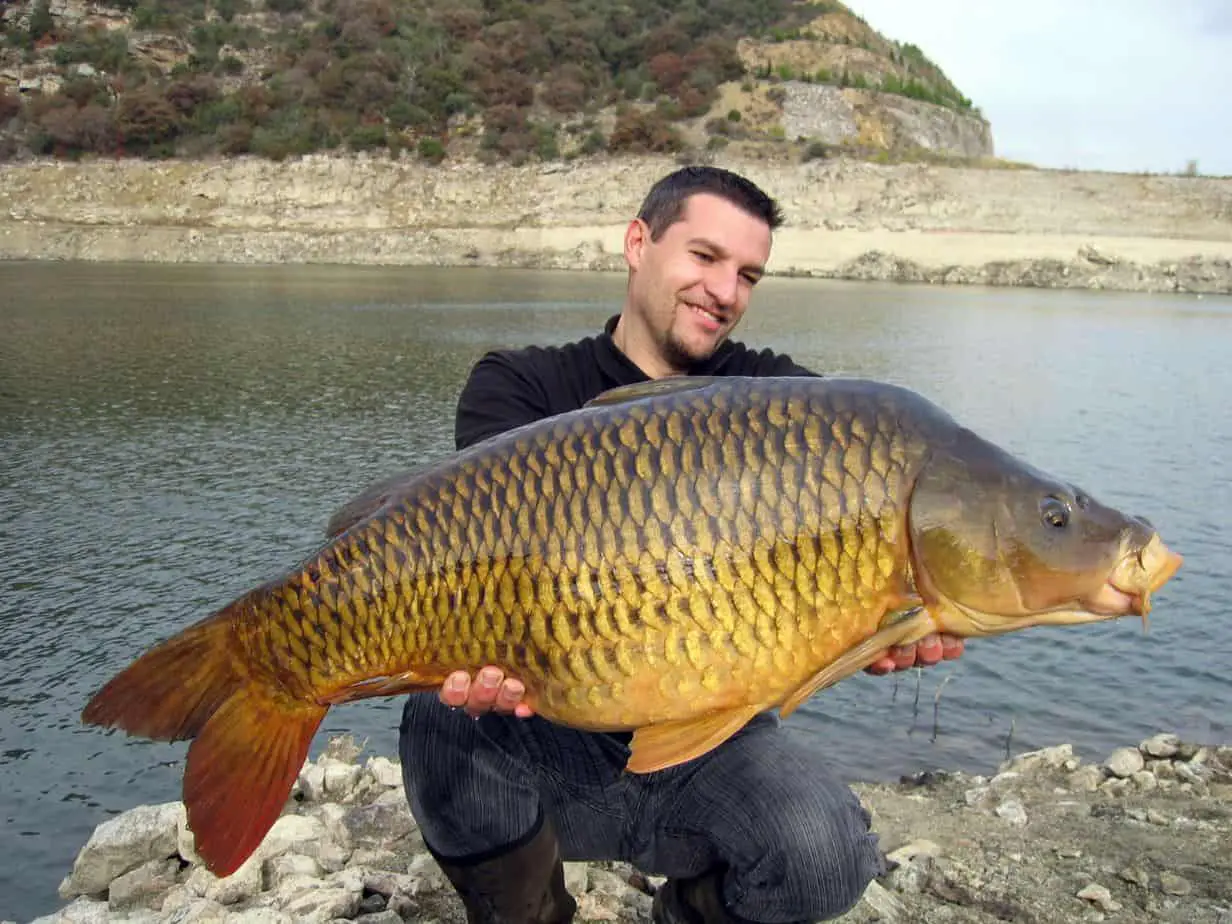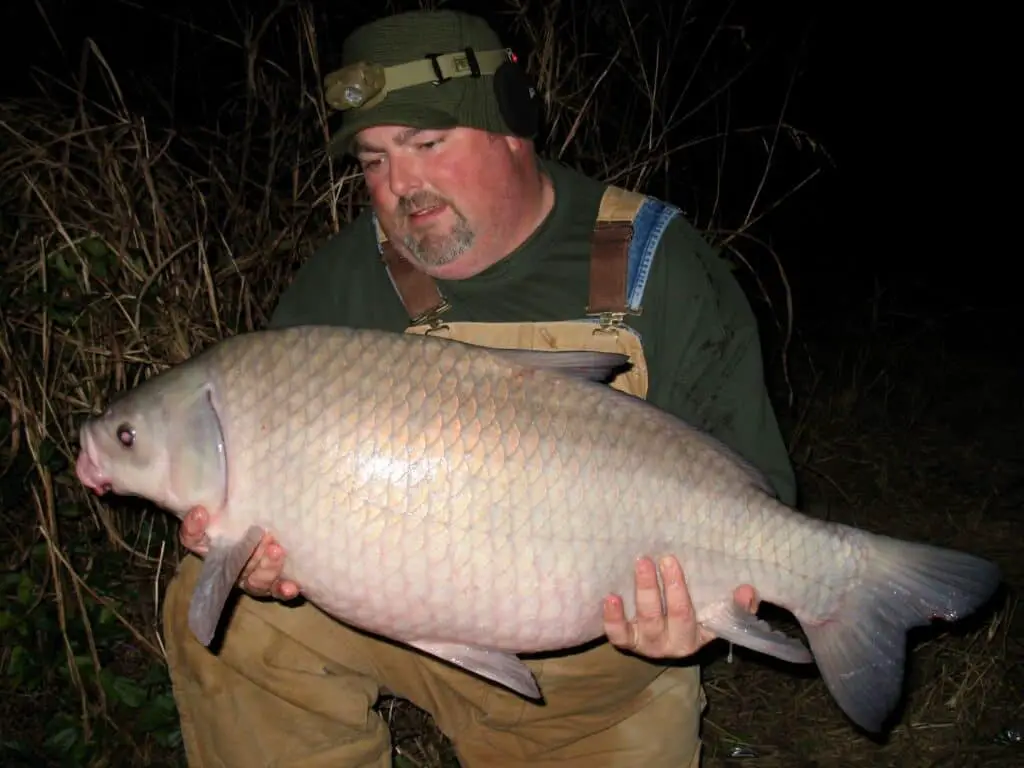Common Carp (Cyprinus carpio) and buffalo fish (Ictiobus cyprinellus) are two species that aren’t frequently fished for in the US and that many people who aren’t in the know often confuse with each other.
There are enough similarities between carp and buffalo fish that it is easy to see why they are often confused, but they are entirely separate species. Carp and buffalo fish are different in appearance, characteristics, distribution, and diet. Carp and buffalo fish also differ in heritage. Buffalo fish are native to the US, while carp are an introduced species.
One thing that both species have in common is that they can grow to be enormous fish that can offer fantastic sport for the angler. They are also both fascinating species with an air of mystery about them that deserves an in-depth look.
This article explores the two species, points out their differences and similarities, and offers some fishing advice.
Differences Between Carp and Buffalo Fish
It is easy to see why these fish are so easily confused. Identification is relatively easy if forearmed with a bit of knowledge. Anglers often ask if buffalo carp are a specific type of fish. Or is there a difference between bigmouth buffalo vs carp? What about smallmouth buffalo vs carp?
Appearance and Characteristics
Common carp have larger mouths and are commonly bronze or brown in color. Buffalo fish are greyish in color, although they can be tan colored as well.
They also belong to entirely different families. Carp are classified as being of the minnow family. In contrast, the buffalo fish are part of the sucker family.
The mouth is another area of difference. Being part of the sucker family, the buffalo fish has a turned down mouth to help it ‘suck’ the bottom or vegetation when it’s feeding. It also lacks the whiskers or barbels that are prominent on Carp.
Tails are another identifying feature. Carp have tails that match the color of their bodies, whereas buffalo fishtails are colored anywhere from dark blue to black,
There are also different subspecies for both fish. As you can see from the following table, these are all large fish!
| Species | Average Weight | IGFA World Record |
|---|---|---|
| Bigmouth Buffalo Fish | 39lbs | 70lb 5ozs |
| Black Buffalo | 10lbs to 30lbs | 63lb 6ozs |
| Smallmouth Buffalo | 35lbs | 82lb 3ozs |
| Common Carp | 31lbs | 75lb 11ozs |
| Silver Carp | 25lbs | 70lb 8ozs |
| Bighead Carp | 30lbs | 90lbs |
It is worth pointing out here that both silver carp and bighead are considered invasive species that negatively affect Buffalo Fish populations whenever they live in a shared habitat.
For the duration of this article, we will concentrate on the common carp. Although it is also an introduced species, it is not seen as being so invasive.
Distribution
Carp are now common in just about every state in the US. Buffalo fish are also widely distributed throughout the US. Buffalo fish are found in Texas, Louisiana, Wisconsin, Minnesota, North Dakota, and Montana and into Canada too. They are prevalent throughout the Mississippi watershed and many other major river systems.
Diet
Both species have very similar diets. They are both omnivorous, and both species feed in similar ways. Carp and buffalo fish are bottom feeders and feed on insect larvae, algae, plants, fish eggs, and just about anything else that comes their way. They both suck the bottom and filter food from the mud or silt as they do so.
Different Fishing Tips for Carp and Buffalo Fish
The first thing to point out is that these species both feed similarly, are of similar size, and neither are fussy eaters. In essence, this means that whatever techniques you use for one species is likely to be equally successful for the other.
Fishing Kit
For both these species, it is best to tackle up on the heavier side for obvious reasons. It doesn’t need to be anything fancy. That’s one of the beauties of fishing for either of these species. It doesn’t cost an arm and a leg to get started. A fairly hefty rod and reel, some 40lb line, and some terminal tackle are all you require.
Baits
These are opportunistic feeders with voracious appetites. So if it’s edible, then there is a good chance if you put it on your hook, then they will swallow it. Common baits are bread or dough, worms, nightcrawlers, plastic scented baits, and sweetcorn, to name a few.
Both these fish will also, if presented correctly, go for certain lures. For fly-fishing, weighted nymphs that are bounced along the bottom can be successful.
Techniques
Both these species fish well at nighttime, but both dawn and dusk can be great times as well. Although daytime fishing isn’t known to be quite as good, it can still produce results. Stealth is important with both types of fish as they can be spooked easily, so if you spot feeding fish, approach with caution. As both species are bottom feeders, ensure that you are targeting the bottom layers of the water.

Additional Facts about Carp
Now that we have established how to identify the species, let’s look at some of their individual characteristics.
History of Carp in the USA
Unlike buffalo fish, carp are an introduced species in the US. Although there are records of them from earlier times in the US, their story starts in the 1870s when a commission was set up to look at the deteriorating quality of many major river systems. Including the declining numbers of native fish stocks. To address this, over 300 live carp were imported. A breeding program was started, and their offspring were distributed throughout the United States.
Other Carp Facts
- Spawning Behavior – Carp Spawning times vary depending on water temperature but generally occurs in the spring or early summer. During spawning, the female and male fish swim side by side, and a female can have several males alongside her fertilizing her eggs.
- Age – The oldest recorded age of a Common Carp is 38 years old. On average, they are believed to live for around 20 years in the wild.
- USA Record – Was caught in Michigan in 2013 and topped the scales at 54lbs 8ozs.
- Considered a Delicacy – Throughout much of the world, the carp is considered as being excellent eating. In the US, this isn’t the case, and carp are not eaten often.
- Fishing Season – Carp can be fished all year round. However, after spawning, the fish are lethargic and weakened and are unlikely to feed, and are unlikely to put up much of a fight if caught.
- Subspecies – As well as the species already noted, there are other notable subspecies, including mirror carp, leather carp, and the decorative koi carp, which are commonly kept in garden ponds.
Additional Facts about Buffalo Fish
Buffalo fish are amongst the largest freshwater fish in the US and are now considered endangered in many places. They have been commercially fished since the 1800s. They are also in danger from invasive species like the silver carp, which can outcompete the buffalo fish.
- Long-Lived – These are among the longest-living fish globally and can live up to 110 years of age. This is part of the problem when it comes to declining stocks. It is estimated that the fish are mostly over 80 years of age in some populations, with very few younger fish coming along to replace them.
- Fishing Methods – While these fish are most often fished with traditional techniques, using a bow and arrow to fish for them is becoming increasingly popular.
- Excellent Eating – Many people believe that these fish’s mild-flavored white flesh is better tasting than any other freshwater gamefish.
- Spawning Behavior – Buffalo fish tend to travel in shoals to their spawning grounds, and once there, the female and males release their sperm and eggs. The females can produce up to 750,000 eggs, and these will adhere to vegetation. Spawning occurs in the spring months.
- Behavior – These fish typically live in schools in river systems. They are bottom feeders that use their mouths to vacuum the bottom. It has been estimated that over half of what they ingest is inedible detritus that simply passes through the fish. They can also be found in lakes and reservoirs.
- Best time of Year to Catch Buffalo Fish – You can fish for Buffalo fish year-round, but April into May is believed to be the best time to fish for them. At this stage, they are moving into their spawning grounds and are often found in the shallows of lakes.
Conclusion
If you showed a picture of a buffalo fish to an angler, there is an excellent chance that they would identify it as a carp. They may even call it a buffalo carp, or buffalo carp fish. More anglers must learn to differentiate between them. Buffalo Fish is part of American heritage and, in many areas, are in steep decline.
Are buffalo carp invasive? Some anglers have been known to kill them simply because they think they are invasive carp. These are a slow breeding and long-lived species that needs all the protection it can get, if you want to help educate fellow anglers and contribute to preserving this species why not share this article of Social Media and help spread the message.
If you find this article helpful, don’t leave without sighing up for our newsletter and checking out our Recommended Fly Fishing Gear List.
Don’t forget to check out our other Fish Guide articles.
- Are Bass Good To Eat?
- What’s the Difference Between Trout and Salmon?
- Are Bonefish Good To Eat?
- What’s the Difference Between Carp and Buffalo Fish?
- Are Pike Good To Eat?
- The 7 Best Secret Rainbow Trout Baits
- Best Powerbait For Stocked Trout
- What Is The Difference Between Walleye And Pickerel?
- What Is A Tiger Trout? Where to Find One and How To Catch One



